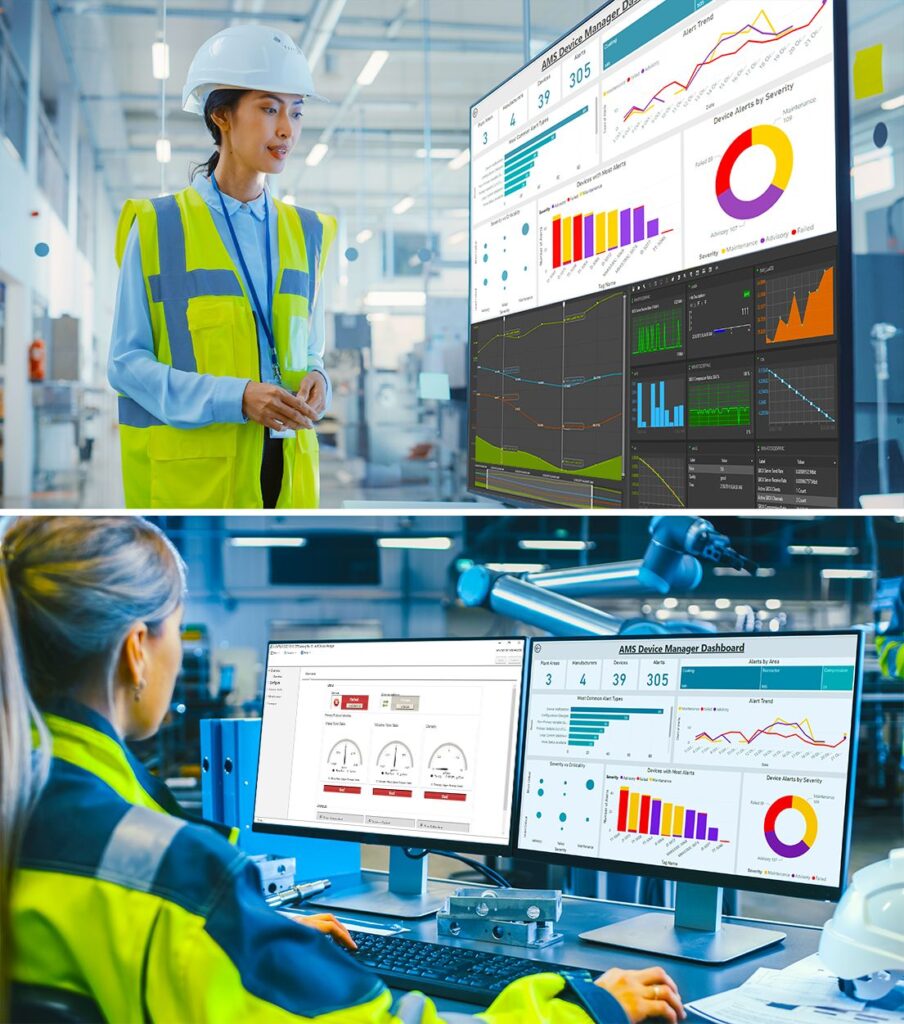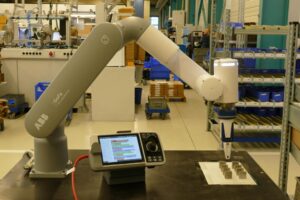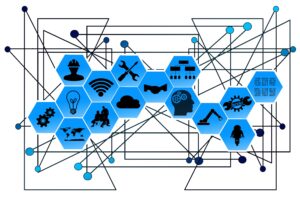
Automatically on course for success
By Valve World Expo
Features automation process industries valve world valvesThe current challenges for the valve industry are manyfold – more than ever, competitive pressure, the energy crisis, supply chain risks, sustainability and the growing shortage of skilled workers call for effective solutions now. But there is an effective way to make these hurdles more manageable with the help of automation. Automatically successful – this could work especially today.
 As a digital enablement tool for smart field devices, Emerson's AMS Device Manager connects to thousands of systems and millions of devices worldwide via standard protocols such as HART, FOUNDATION Fieldbus, WirelessHART, and PROFIBUS. The AMS Device Manager Data Server enables users to “unleash the full potential of data from these smart field devices for advanced aggregation and analysis so to drive digital transformation and bundle operational systems,” explains Emerson. Source: Emerson
As a digital enablement tool for smart field devices, Emerson's AMS Device Manager connects to thousands of systems and millions of devices worldwide via standard protocols such as HART, FOUNDATION Fieldbus, WirelessHART, and PROFIBUS. The AMS Device Manager Data Server enables users to “unleash the full potential of data from these smart field devices for advanced aggregation and analysis so to drive digital transformation and bundle operational systems,” explains Emerson. Source: Emerson Automatically on course for success – more and more companies are relying on this: The automation of industrial production will continue to accelerate due to new technologies and vendors, according to an analysis by McKinsey & Company. The market for industrial automation will therefore grow by almost four percent annually to over US$115 billion by 2025 soon. Cloud and IloT solutions in particular are amongst the winners.
“The bulk of the market (US$76 billion) will then consist of the automation of process industries such as the chemical or oil and gas sectors, followed by production environments such as automotive or semiconductor manufacturing with US$32 billion in volume,” explains McKinsey.
More productive processes
Industry suppliers are also increasingly leveraging the potential of automation for their own processes. AS-Schneider for instance renders its production more productive through a high degree of automation. Collaborative robots (cobots) are now to take over simple and repetitive activities in the assembly department: Employees are freed up and lead times shortened. Cobots could be used for laser marking, tape winding of screw plugs, greasing of valve tops and drying after pressure testing. “Productivity increases could amount to between ten and 15 percent,” explains AS-Schneider.

Thanks to a high degree of automation, AS-Schneider was able to render its manufacturing processes more productive. Simple and repetitive tasks during assembly could now be taken over by collaborative robots. Photo: Armaturenfabrik Franz Schneider GmbH + Co. KG.
Valve and actuator industry components are essential for plant automation. Air Torque for instance experienced an increasing demand for actuators as an essential part of automation. Depending on the control medium, the company is noticing different trends. “With electrically driven actuators, the integration of control, monitoring and maintenance functions has been state of the art for some time – take predictive maintenance for example,” reports Air Torque. And in addition to the increasing digitization and networking variance of valve actuators in pneumatic actuators, there is a development towards a modular attachment of logic and control elements.
Digitalization as a game changer
bar pneumatische Steuerungssysteme sees a trend towards greater automation in gas applications, triggered by conversions to LNG, hydrogen plus methanol for fuel production and CO₂ capture in high-emission industries. According to bar, industries such as shipbuilding, storage and gas removal, the transport and distribution sector are also open to automation. The chemical industry on the other hand sees its competence rather in its own production performance and expects ready-made automation solutions adapted to process technology.
Digitalization is considered a game changer in automation. As bar states, it provides important momentum. Depending on focus, the relevance of data can thus be used for production measurement or predictive maintenance. A sophisticated programmed automatic valve “also increases protection against unauthorized interventions in the process sequences”. System availability is improved by digitized actuators, controls and valves; maintenance costs are reduced thanks to higher quality and productivity is increased. The controller, equipped with suitable communication, is part of the future Smart Factory: Proper data management allows for reduced emissions, improved recycling processes, and minimized production waste.
Sensor and actuator profiles
Digitalization is taking automation to a new level: As such, the aim is to further optimize the IO-Link – as a communication system for linking intelligent sensors and actuators to an automation system. The goal is an even broader and more efficient use of IO-Link in automation. This has already been achieved through the development of the Smart Sensor Profile (SSP). This standard allows a 1:1 exchange of similar devices from different manufacturers with their basic functions – without the need to adapt any function blocks. “Thanks to digital transmission via IO-Link, conversion errors are a thing of the past,” the IO-Link community explains.

Digitalization and automation are among the key trends in the industry. Their networking opportunities open up new opportunities for companies. Photo: Pixabay.
Now for the next step: “We are currently working on creating a Smart Actuator profile, because users also wish to see uniform profiles in actuator technology,” the IO-Link community advises.
Automation for projects
As evidenced by countless projects, automation is in higher demand than ever. Valmet for instance is providing automation for a UK energy-from-waste project in Sandwell and Dudley. Amongst others, this order includes a DNA automation system, integrated controllers, and an electrical control system. The start of full operations is planned for 2025. Another order was received by Valmet from Kuwait, to retrofit the automation system of the Sabiya energy and water distillation station – the commissioning will be completed in autumn 2024.
Emerson provides automation solutions for safety and reliability of the first large-scale photovoltaic (PV) solar power project in New Zealand. The order includes a decentralized process control system and controllers. The aim is to minimize the impact of fluctuations and interruptions in PV power generation.
Great savings potential
However, the industry is already eying up the next development milestone: the use of artificial intelligence (AI). According to the Federal Association of German Industry (BDI), a 20 percent improvement in plant use is possible if AI maintenance work is carried out proactively. In addition, a systematic cooperation of robots and employees will make a 20 percent higher productivity of individual work steps feasible. “AI can make quality monitoring 50 percent more productive – for example, through automatic visual error detection for products,” says the BDI. In certain areas, a waste reduction of up to 30 percent is possible.
The potential of digitalization and artificial intelligence for automation is therefore enormous, while at the same time there is a great need to catch up. Openness towards technology could therefore become a recipe for success for companies trying to master current challenges.
Trends and highlights from the valve industry can be experienced at Valve World Expo from December 3 to 5, 2024 in Düsseldorf, Germany. Current industry and product information can be found on the internet portal at www.valveworldexpo.com.
Print this page